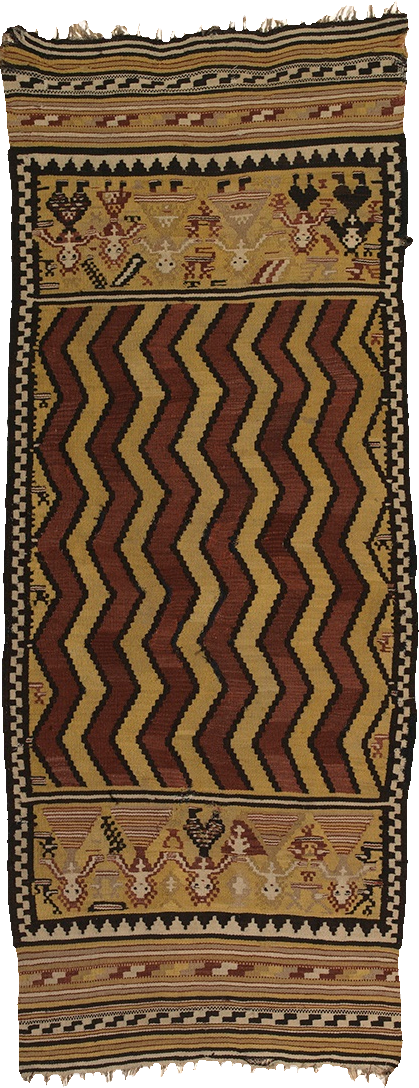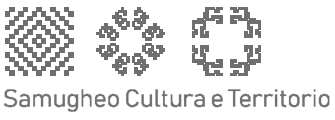M.U.R.A.T.S. (The Museum of Textile Arts in Sardinia).
The Museum of Textile Arts in Sardinia (MURATS) was founded in 2001. As well as preserving and keeping items that illustrate the textile history of the whole region, it also hosts a series of exhibitions and events that show ideas from modern day, allowing visitors to wonder about new contemporary trends, offering the tools to establish a relationship between culture and territory that could create dialogue through workshops, conferences, seminars, debates, laboratories, research and study.
Museum of Textile Arts
The museum is on the outskirts of the town, , in a two-storey building, especially built for this purpose in 2001. Most of the structure is is occupied by three exhibition rooms, two on the ground floor and one on the first, for a total exhibition space of approximately 750 square metres. In addition to the service area, the building also contains a fully equipped conference area that seats 137.
Activities and Heritage
The activities of the MURATS are divided between the organisation of temporary exhibitions, with projects dedicated to contemporary Sardinian arts and crafts, seeking to connect these two apparently distant worlds, and the permanent exhibition of its own Collection. The Collection consists of a substantial body of works from different parts of the island: blankets, sheets, linens for babies, house linens for everyday use, bags and sheets for the countryside, clothing for shepherds, traditional festival costumes, which can be dated back to the early 18th century, through to the early 20th century and made from wool, cotton and linen. Since 2017, the museum has added another collection of prestigious items, created in honour of Prince Karim Aga Khan, a great lover of Sardinia, from rugs to craftsmanship in general. The idea came to be following a surprise visit to the museum by the Imam of the Nizari Ismaili Imamati Muslims in 2015, when he donated a large sum to be spent on various projects to make the most of the Museum and Sardinian weaving: a multimedia talking rug, the edition of the catalogue of items in the MURATS and a prize for local artisans. This in turn led to the idea of creating a collection dedicated to the Aga Khan. This collection, known as the “Prince’s Collection”, consists of 8 carpets and 8 large-sized blankets, together with a sack, all entirely made by hand on traditional looms by the most expert craftsmen and women of Samugheo.
Ethnographic Selection


The museum also includes an ethnographic section where weaving tools, such as traditional wooden looms and traditional festival and everyday clothing of Samugheo are displayed. In particular, the woman’s dress, which consists of a long white shirt, embroidered on the front, sleeveless bodice with red trim and floral designs on the back, coarse woollen fabric skirt and finely embroidered apron, also in a coarse fabric. The most remarkable characteristic of the woman’s outfit is the headscarf, which consists of 4 handkerchiefs (although various historic images and information show or describe a headscarf made of 12 handkerchiefs) which are woven together and in some cases, knotted under the chin. The man’s outfit consists of an embroidered shirt and white linen trousers, a coarse woollen cloth skirt and cloth gaiters, with blue ribbon fastenings. The outfit is completed by a su cosso (waistcoat), unique in Sardinia for its large floral iconography; on the head, a classical Sardinian cap, sa berritta, made in coarse woollen or soft cloth.
Immagini di Ludovico Mura
Education
Besidese the exhibition of textiles, there is a special educational area where it is possible to take a more detailed look at the stages in traditional weaving: from the choice of raw materials to the preparation of the fibres for processing, as well as the antique weaving tools.
The Most Important Artefacts at the MURATS

Tapinu e mortu – Immagini di Ludovico Mura
Countless artefacts worthy of note are part of the permanent collection at the MURATS; these include 5 tapinus ‘e mortu, extremely rare artefacts (only ten or so are known), from the Barbaricina area, and more precisely, from Orgosolo. The examples owned by the museum can be dated back to the late 18th and early 19th centuries, and they were used to hold the body during the wake. The tapinus were carefully kept and handed down from mother to daughter. Their use at a wake was essential, on a par with mourning and s’attitidu, the funeral dirge. It was believed that without these elements, the deceased would not have had the honours required to undertake his or her final journey. The specific nature of the tapinu comes from the complexity of its symbols, which are connected to the Neolithic religions of Sardinia, which represented the Mother Goddess in burial sites.
Just as worthy of note is sa fressada, an item similar to su tapinu ‘e mortu, but made on a vertical loom, which is why it could be made in much larger sizes – even 4 metres by 2. For the rest, the materials are the same, as are the colours and the symbols, with the exception of the zig-zag area which is not used on the fressada . Sa fressada was given as a wedding gift to the bride by her maternal grandmother. The gift to the bride, especially when from a poor family, had two uses: one for everyday needs and then, as needed, to honour the dead. Historical sources confirm its use for funerals, including various Synods which prohibited its use in particular circumstances. In fact, during lengthy droughts, it was normal to immerse the bones of the deceased, wrapped in their covers, into the waters of a river to call up the rain, hecar à los rios los huessos de los defuntos ò la manta para lover, to the extent that the Synod of Ales-Terralba, in 1696, Oristano in 1708 and Cagliari in 1715, prohibited this custom, which was opposed by the Church, not due to the improper use of the artefacts but because of the pagan aspect of this custom. The same symbols of the tapinus ‘e mortu and fressadas can also be found on different artefacts which have reached the museum from the Oristano area and more precisely, sa manta and sa fanuga, clothing made on the horizontal loom, using the raised technique known as a pibiones, and made with linen and cotton. These were mainly covers and valances.
The other rarities in the MURATS collection include sas affaciadas, tiny strips of finely worked fabric in light blue, which would be hung from the balconies during the Corpus Domini procession .
The MURATS collections
“The Prince’s Collection”
Since 2017, the M.U.R.A.T.S. can boast another collection of prestigious artefacts, the ones dedicated to Prince Karim Aga Khan. The idea came about following a visit, two years ago to Samugheo by His Highness who, on that occasion donated a large sum to be used for various projects, a coral carpet, a catalogue of the fabrics preserved at the M.U.R.A.T.S., and an award for local artisans.
This in turn led to the idea of creating a collection dedicated to the Aga Khan. The collection consists of 8 carpets, 8 blankets and a sack, all entirely made by hand on a traditional loom.

“Cocco Collection”
The collections of significant ethnographic interest regarding Sardinia include the ISLAND heritage, which comes from the collection of Commendator Cocco and purchased by the Regional Institute in 1960.
Commendator Cocco’s collection consists of a large number of prestigious items, including – as well as items of traditional clothing and jewellery – a series of woven fabrics dating back to the 19th century, all finely made – some exceptionally so in terms of workmanship, use of materials and choice of decoration.
Some fabrics have the date, place in which they were made, and the name of the weaver, all precious elements that give some idea as to the origin and time of the piece.
The series of coffin covers from Campidano, consists of especially fine pieces, examples of the unique decoration in traditional homes, which were sober and essential, while care and decoration went into useful items.
The sacks, essential means to hold and carry items and food, were used by shepherds and farmers, and here, we here festive versions can be seen.
One interesting type is the affacciadas, items which it is thought were “dropped” down from balconies at the passage of religious processions.
The inghirialettos, borders that decorated the end part of a pabàglione (canopy) bed were widely used throughout Sardinia.
Embroidered shawls were used as head covering in some areas of central Sardinia.
Embroidery, which women learned at convents, was initially reserved to dowries for the home, went on to become a part – albeit in a modest format – of traditional clothing, in the early 19th century.
Immagini di Ludovico Mura

